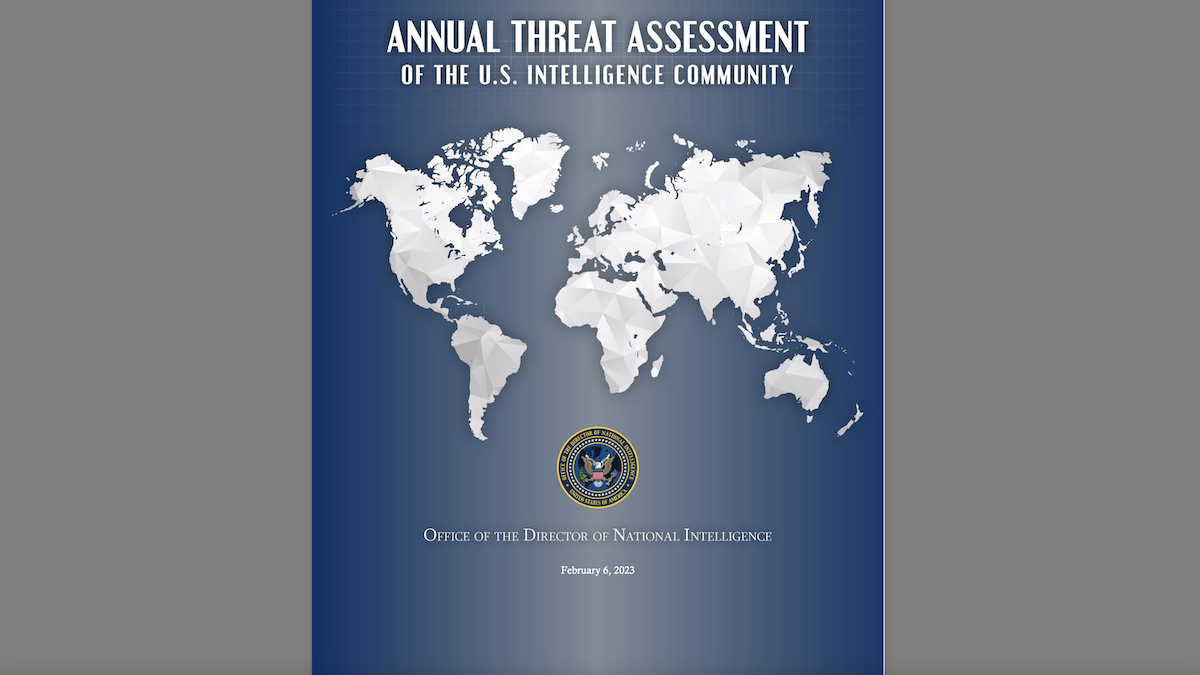“Countries globally remain vulnerable to the emergence or introduction of a novel pathogen that could cause a devastating new pandemic.”
HEALTH SECURITY
INFECTIOUS DISEASES AND THE IMPACT OF THE COVID-19 PANDEMIC
FOR EDUCATIONAL PURPOSES.
SOURCE: ANNUAL THREAT ASSESSMENT OF THE U.S. INTELLIGENCE COMMUNITY February 6, 2023
Now entering its fourth year, the COVID-19 pandemic remains one of the most significant threats to global public health, at a cost of more than 6.5 million lives lost and trillions of dollars in lost economic output to date. Despite the gradual decline of the most severe health effects of COVID-19 because of the greater availability of vaccines globally, increased natural immunity, and better treatments, significant challenges remain as countries now are responding to new variants, waning vaccine protection, gaps in vaccine coverage, challenges in management of public health safety measures, and growing misinformation campaigns aimed at sowing doubt and discrediting public health institutions worldwide. In addition to direct effects of the pandemic, resultant economic, human security, political, and national security implications of COVID-19 continue to strain recovery efforts, presenting both known and unforeseen challenges that probably will ripple through society and the global economy during the next year and for years to come.
- During the next year, pandemic-related higher debt burdens, constrained government spending, and ongoing employment disruptions and insecurity are expected to heighten the risk of financial instability and poverty, particularly in low-income countries and those recovering from the most severe economic effects of COVID-19.
- The combination of economic and human security challenges resulting from COVID-19 probably will further strain capacities of governments to meet public demands during the next year and for years to come, particularly when combined with the need to address similar challenges arising from climate change. The potential for public discontent and societal divisions will grow, and risks to democratic governance, political stability, and migration fluctuations in some countries will increase.
- Despite some improvement during the last year, pandemic effects continue to challenge the delivery of essential health services—in some cases because of healthcare worker shortages, delays in non- emergency procedures, or avoidance to seek healthcare because of misinformation or fears of becoming infected with COVID-19. The factors probably will continue to contribute to poor health outcomes and hamper countries’ abilities to control disease, particularly low- and middle-income countries.
Countries globally remain vulnerable to the emergence or introduction of a novel pathogen that could cause a devastating new pandemic. Drivers for disease emergence persist and are on the rise, including climate change, deforestation, human encroachment into previously undisturbed habitats, wildlife harvesting and trade, mass food production, and lack of international consensus on biosafety norms. These drivers are compounded by factors that facilitate global spread, such as international travel and trade, inadequate global disease surveillance and control, distrust of public health authorities, health disinformation, and health system strain brought on by the COVID-19 pandemic. Emerging agricultural and livestock diseases and antimicrobial resistance—although not necessarily involving pathogens of pandemic concern—threaten to cause immense economic damage and disruption to food supplies if they spread globally or into new regions.
A lack of global field biosafety standards and protective measures continues to raise concerns of viral spillover worldwide. Increased interest in field sampling and advanced biological research since the onset of the COVID-19 pandemic, poor training, and lack of international inspection and standardized regulatory requirements have all been implicated in contributing to the risk of contamination and/or breaches in biocontainment.
Our Assessment of the Origins of COVID-19
The IC continues to investigate how SARS-CoV-2, the virus that causes COVID-19, first infected humans, maintaining a Community of Interest across agencies. All agencies assess that two hypotheses are plausible explanations for the origin of COVID-19: natural exposure to an infected animal and a laboratory-associated incident.
- Beijing continues to hinder the global investigation, resist sharing information, and blame other countries, including the United States.
BIOLOGICAL WEAPONS
Global shortcomings in preparedness for the COVID-19 pandemic and concerns with biosecurity, fabricated public claims about U.S. biological weapons development fueled by U.S. adversaries, as well as continued questions surrounding the origins of the COVID-19 virus, may inspire some adversaries to consider options related to the development of biological weapons.
- China, Iran, North Korea, and Russia continue to publicly push false narratives that may drive global threat perceptions of biological weapons, including linking U.S. laboratories abroad to COVID-19 origins, breaches in biosafety, untrustworthy vaccines, and biological weapons. Russia’s false messaging about alleged U.S. biological weapons work has been amplified in the aftermath of Russia’s invasion of Ukraine—leading up to its invocation of Article V at the Biological and Toxin Weapons Convention in 2022—and will persist as Russia pushes its false narratives across international venues.
- Rapid advances in dual-use technology, including bioinformatics, synthetic biology, nanotechnology, and genomic editing, could enable development of novel biological weapons that complicate detection, attribution, and treatment.
ANOMALOUS HEALTH INCIDENTS
We continue to closely examine Anomalous Health Incidents (AHIs) and ensure appropriate care for those affected.
IC agencies assess with varying levels of confidence that most reported health incidents can be explained by medical conditions, or environmental or technical factors, and that it is unlikely that a foreign actor— including Russia—is conducting a sustained, worldwide campaign involving hundreds of incidents without detection. This finding does not change the fact that U.S. personnel are reporting real experiences, nor does it explain every report. The IC continues to actively investigate the AHI issue, focusing particularly on a subset of priority cases for which it has not ruled out any cause, including the possibility that one or more foreign actors were involved.

